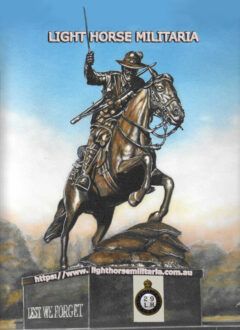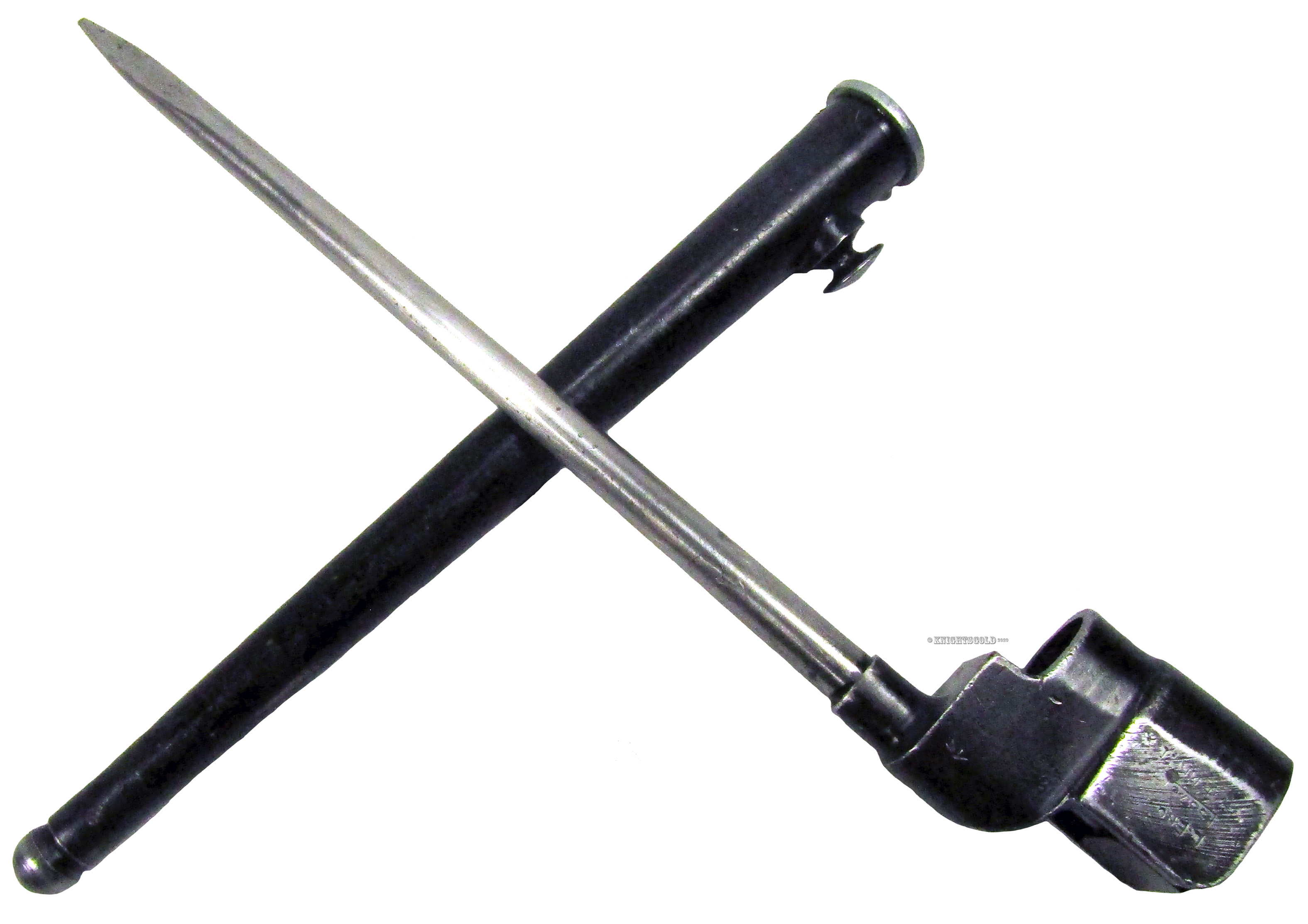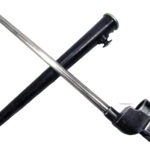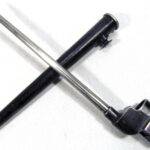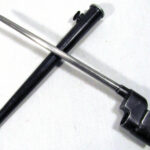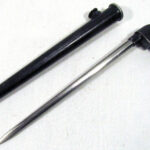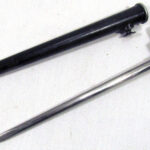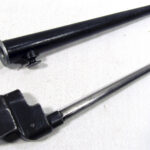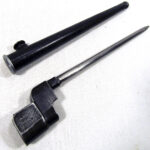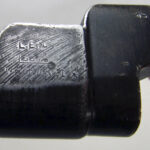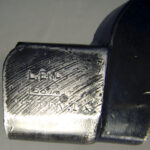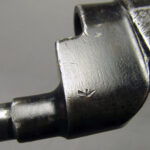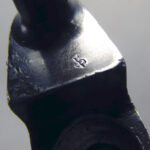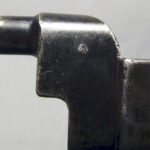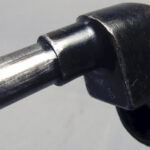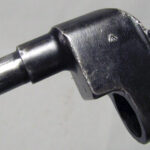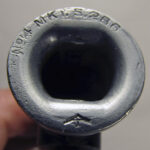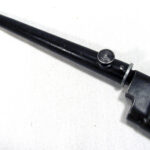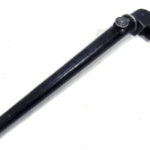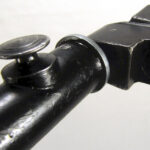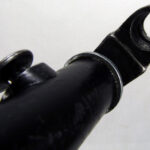©Debra.Elvery-Knight2024
FREE-POST with SIGNATURE & INSURANCE AUSTRALIA-WIDE / 1-DAY DISPATCH SERVICE / 30-DAY RETURN / MONEY BACK GUARANTEE
#Australian Law prohibits the sale to anyone under the age of 18. #The buyer accepts full responsibility for the sale and its use. #The sale of knives and other controlled items to minors in Queensland is prohibited, penalties apply, acceptable evidence of age may be required.
For your consideration, you are viewing a Vintage WWII Spike Bayonet, this is called the Lee-Enfield No.4 MK II* Bayonet with an Mk I Steel Scabbard, this bayonet was for use with the No.4 Short Magazine Lee-Enfield (SMLE) Infantry 303 Rifles used from about 1939 up until 1959. This spike bayonet was made by Lewisham Engineering at 9 & 11 Malyons Road, Ladywell, London, Lewisham was the smallest maker of the No. 4 Mk. II*, from 1943–1945 established on the bombed-out South East London Indoor Sports Club (destroyed in the blitz bombings of 1940–41), purely to manufacture bayonets, and worked around the clock during 1942, provided with capstans, drilling and milling machines, centre lathes, a steel-hardening and processing plant, with a centre-less grinding machine. The factory finally went on to produce cylinder heads for Davey-Paxman landing craft engines. The factory site was demolished to house (apartment) flats mid-1980s. The No.4 series of spike bayonets was also affectionately known as a Pig-Sticker, It is a short spike (fixed conventionally) and was unpopular with the soldiers due to its short length. It has no handle but soldiers were issued with a 'Broomstick' attachment. This extension allowed the Spike bayonet to be used as a combat-thrusting weapon. They are very basic, yet very functional as a bayonet but absolutely useless as a knife. #The makers and or inspection marks are:- SOCKET: "L. Eng" over "S376 within a rectangle" over "No 4 MkII*" REVERSE: "War Arrow"
- FLUTE: "BROAD ARROW" partial
- SCABBARD: "No 4 MkI" - "S286" - Vanden Plas (Eng). on the throat.
- Photos do not show the actual size so please read the description page for the exact measurements.
- Colours may display differently, depending on your computer and settings.
- Highly reflective shiny items like metals, silver, gold, jewels, and glass reflect everything (including us!) and create optical illusions.
- The item featured in the photos is the exact one you will receive.
- The lead photo has had the background removed with Photoshop, all the original untouched photos are also included to view.
- Any errors will be accidental and not intentional or purposely misleading.
- LENGTH: 25 cm / 9.84"
- WIDTH: 4.2 cm / 1.65"
- DEPTH: 2.2 cm / 0.86"
- The original was the rare No 4 Mk I Cruciform.
- The second was the No. 4 Mk. II which was a simplified version, eliminating the milling cuts required to create the cruciform blade flutes and was otherwise identical to the Mk. I, with the bayonet and socket one solid forging.
- The third was the No. 4 Mk. II* which was a further simplified version, with the socket and blade being two separate forgings. The two-piece construction gives the No. 4 Mk. II* a characteristic stepped join between the blade and socket.
- The fourth No. 4 was the crude Mk. III, the socket was formed by welding together 7 steel stampings, thus eliminating the socket forging process. This was declared obsolete in 1946 and was the crudest and final design form of the No. 4 spike bayonet.
- Singer Manufacturing Co in Scotland. (the famous sewing machine Co.), at Clydebank, Scotland. Singer produced No. 4 Mk. II bayonets from 1942–1944.
- Savage Stevens Co. in the USA. The Savage-Stevens Co. of Chicopee Falls, Massachusetts. Providing Britain under the Lend-Lease Act. Savage made cruder forgings than either Singer or Long Branch, producing the No. 4 Mk. II bayonets from 1941–1942.
- Long Branch in Canada. The Crown Corporation Small Arms Ltd., Long Branch, Ontario, Canada, produced the No. 4 Mk. II bayonets from 1942–1944.
- Prince-Smith & Stells, in Keighley, Yorkshire, from 1942–1945.
- Howard & Bullough, of Accrington, Lancashire from 1942–1943
- Lewisham Engineering, of Malyons Road, Ladywell, London. (Lewisham is the smallest maker of the No. 4 Mk. II*) from 1943–1945.
- Baird Manufacturing Co. of Belfast, Northern Ireland. (Was the 2nd smallest maker) from 1942–1944.
